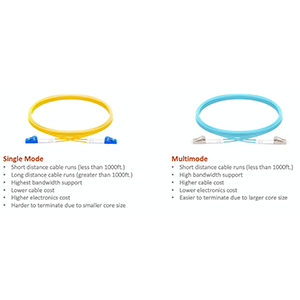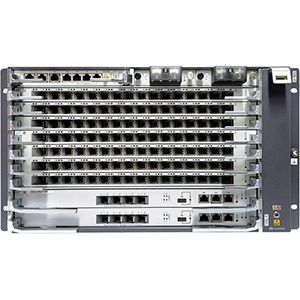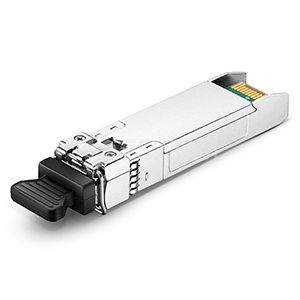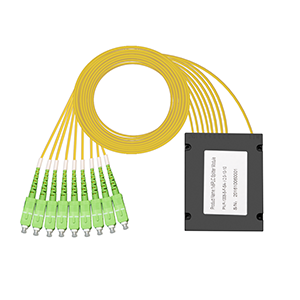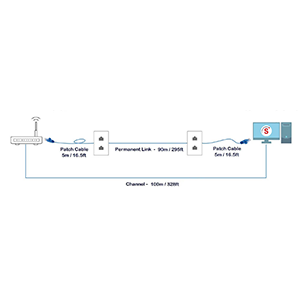Single-mode fiber and multimode fiber undoubtedly play an important role in communication networks. This article will explore the key technologies for converting single-mode fiber to multimode fiber. We will first compare the physical structure and optical properties of the two optical fibers and analyze their differences in transmission distance, bandwidth, etc. Next, we will explain the specific needs of single-mode to multimode conversion in practical applications and explore its potential advantages and application scenarios.
We will introduce the principles and operating steps of conversion using couplers and fiber longitudinal mode converters. In addition, we will analyze the differences between the two conversion methods in terms of conversion efficiency, cost, etc., and provide appropriate selection suggestions based on actual needs. Finally, we will explain the measurement indicators and test methods of the transmission characteristics of the converted optical fiber and demonstrate the performance test process in an actual network environment.

The basic difference between single-mode fiber and multimode fiber
Let me compare the basic difference between single-mode fiber and multimode fiber in detail for you.
Comparison of physical structure and optical properties:
1. Core diameter size:
- The core diameter of single-mode fiber is relatively small, usually only 8-10 microns.
- The core diameter of multimode fiber is relatively large, usually 50-100 microns.
2. Refractive index distribution:
- Single-mode fiber has a step-type refractive index distribution and can only transmit a single mode.
- Multimode fiber usually uses a gradient refractive index distribution and can transmit multiple modes.
3. Emission source matching:
- Single-mode fiber needs to be matched with a single-mode laser (such as a semiconductor laser).
- Multimode optical fiber can be used with emission sources such as LED or multimode laser.
Comparison of transmission performance differences:
1. Transmission distance:
- The transmission distance of single-mode optical fiber can reach tens to hundreds of kilometers.
- The transmission distance of multimode optical fiber is generally limited to a few kilometers.
2. Bandwidth support:
- Single-mode optical fiber can provide ultra-high bandwidth of up to tens of Gbps.
- The bandwidth of multimode optical fiber is relatively low, usually 1-10Gbps.
3. Attenuation characteristics:
- The optical signal attenuation of single-mode optical fiber is low, with a loss of less than 0.2dB/km.
- The optical signal attenuation of multimode fiber is relatively high, at 0.5-3dB/km.
4. Bend sensitivity:
- Single-mode fiber is less sensitive to bending and can withstand a smaller bending radius.
- Multimode fiber is more sensitive to bending and requires a larger minimum bending radius.
In short, single-mode fiber is widely used in backbone networks and long-distance fiber communications due to its ultra-high transmission bandwidth and long-distance characteristics. Multimode fiber is more suitable for short-distance, low-cost LAN and access network application scenarios. Both types of fiber have their own advantages and should be selected according to specific needs.
The necessity of converting from single-mode to multimode fiber
Let me introduce to you the necessity of converting from single-mode fiber to multimode fiber and the potential advantages of this conversion in practical applications.
Specific requirements for single-mode to multi-mode conversion:
1. Transmission distance limitation:
- Single-mode fiber can support long transmission distances, but it may be too wasteful in LANs or access networks.
- Multi-mode fiber has a relatively short transmission distance, but it can meet the needs of most LAN applications.
2. Equipment compatibility:
- Single-mode fiber requires a dedicated single-mode emission source, while multi-mode fiber is compatible with common emission sources such as LEDs.
- In some application scenarios that require compatibility with existing equipment, single-mode fiber needs to be converted to multi-mode fiber.
3. Cost considerations:
- Single-mode fiber is usually more expensive than multi-mode fiber, especially in small-scale applications such as LANs.
- Converting single-mode fiber to multimode fiber can reduce the deployment cost of the overall system.
Potential advantages and application scenarios of single-mode to multimode conversion:
1. Extended transmission distance:
- At the transfer point from the backbone network to the LAN, single-mode fiber can be converted to multimode fiber.
- Use multimode fiber to cover short-distance requirements within the LAN and improve the cost-effectiveness of the overall system.
2. Simplify device interconnection:
- Multimode fiber is directly compatible with common optical transceiver devices such as LEDs and VCSELs.
- In small and medium-sized networks such as enterprise or campus networks, single-mode to multimode is conducive to device interconnection.
3. Reduce deployment complexity:
- The installation and maintenance of multimode fiber is usually simpler and more convenient than single-mode fiber.
- In application scenarios that require flexible deployment, single-mode to multimode can reduce the complexity of network construction.
In summary, the conversion of single-mode to multimode fiber can simplify network deployment and improve the applicability and economy of the overall system while meeting the requirements of transmission distance, equipment compatibility and cost. This conversion is very valuable in small and medium-sized applications such as access networks and enterprise networks.
Main methods for converting single-mode to multimode fiber
Let me introduce you to the two main methods of converting single-mode fiber to multimode fiber, including the use of couplers and fiber longitudinal mode converters.
Use coupler for single-mode to multi-mode conversion:
1. Working principle:
- An optical coupler is an optical device that can achieve mutual coupling between different types of optical fibers.
- By setting a coupler between single-mode fiber and multi-mode fiber, optical signal conversion can be achieved.
2. Operation steps:
- Connect the output end of the single-mode fiber to the single-mode input end of the coupler.
- Connect the multi-mode output end of the coupler to the input end of the multi-mode fiber.
- Optimize conversion efficiency by adjusting the parameters of the coupler, such as eccentricity.
3. Advantages and disadvantages:
- The advantage is that the operation is relatively simple and the price of the coupler is relatively low.
- The disadvantage is that the conversion efficiency is limited and energy loss cannot be completely eliminated.
Use fiber longitudinal mode converter to achieve single-mode to multi-mode conversion:
1. Working principle:
- The fiber longitudinal mode converter uses optical principles to convert single-mode light into multi-mode light.
- By adding a converter to the input end of the single-mode fiber, the output end is a multi-mode fiber.
2. Conversion process:
- After the single-mode light enters the converter, it is focused into a small emission area.
- The output light of the emission area exhibits multi-mode characteristics, thus achieving conversion.
3. Advantages and Disadvantages:
- The advantage is that the conversion efficiency is high and there is basically no energy loss.
- The disadvantage is that the cost and complexity of the converter are relatively high.
In short, the two conversion methods have their own advantages and disadvantages. According to the actual application requirements, you can choose to use a coupler or a fiber longitudinal mode converter to achieve efficient conversion from single-mode fiber to multi-mode fiber.
Comparison of the advantages and disadvantages of using different conversion methods
Let me compare the advantages and disadvantages of using a coupler and a fiber longitudinal mode converter for single-mode to multi-mode conversion, and provide selection suggestions based on actual application requirements.
Comparison of the advantages and disadvantages of couplers vs. longitudinal mode converters:
1. Conversion efficiency:
- The conversion efficiency of using a coupler is relatively low, and there will be a certain amount of energy loss.
- The conversion efficiency of fiber longitudinal mode converter is high, and there is almost no energy loss.
2. Cost and complexity:
- The price of coupler is low, and the operation is relatively simple.
- The cost and complexity of longitudinal mode converter are high, and precise optical design is required.
3. Compatibility:
- Couplers can be directly connected to standard single-mode and multi-mode optical fibers.
- Longitudinal mode converters require special design and poor compatibility with standard optical fiber interfaces.
4. Maintenance and adjustment:
- Couplers generally do not require too much adjustment and maintenance.
- Longitudinal mode converters may need to be adjusted regularly to optimize conversion performance.
Applicable scenario recommendations:
1. Application scenarios with low conversion efficiency requirements:
- You can consider using a low-cost coupler for single-mode to multi-mode conversion.
- For example, in small and medium-sized local area networks, enterprise networks and other scenarios.
2. Application scenarios with high conversion efficiency requirements:
- Fiber longitudinal mode converters with higher conversion efficiency should be selected.
- Applicable to professional-level networks that need to minimize signal loss.
3. Scenarios with higher requirements for cost and compatibility:
- You can give priority to using a coupler for conversion.
- This solution is more flexible and directly compatible with standard fiber interfaces.
In summary, in the actual application of single-mode to multi-mode conversion, it is necessary to choose to use a coupler or a fiber longitudinal mode converter based on specific efficiency, cost, compatibility and other requirements. These two methods have their own advantages and disadvantages, and need to be weighed.
Performance test and verification of single-mode to multi-mode conversion
Let me introduce you to the performance test and verification method after single-mode to multi-mode fiber conversion in detail.
Measurement indicators and methods of fiber transmission characteristics after conversion:
1. Optical power loss:
- Use an optical power meter to measure the input and output power of the single-mode fiber and the converted multi-mode fiber.
- Calculate the power difference between the two, which is the optical power loss during the conversion process.
2. Optical signal quality:
- Use an optical time domain reflectometer (OTDR) to detect the connectivity and signal quality of the optical fiber.
- Observe the optical fiber echo pattern and analyze whether there are abnormal conditions such as reflection and scattering.
3. Bandwidth characteristics:
- Use a network analyzer to test the transmission bandwidth and frequency response curve of the optical fiber.
- Check whether the converted multimode optical fiber meets the required bandwidth requirements.
4. Transmission distance:
- Test the maximum reliable transmission distance of the converted multimode optical fiber.
- Evaluate the actual transmission performance through Ping command, Speedtest, etc.
Performance test process example in actual network environment:
1.Test preparation:
- Prepare test equipment, such as optical power meter, OTDR, network analyzer, etc.
- Wire the network on-site and connect the single-mode fiber and the converted multi-mode fiber.
2.Optical power loss test:
- Use an optical power meter to measure the input and output power of single-mode fiber and multi-mode fiber.
- Calculate the loss value between the two to ensure that it meets the expected requirements.
3.Optical signal quality detection:
- Use OTDR to check the connectivity of the fiber and observe whether there is any abnormality in the echo graph.
- Analyze the loss characteristics of optical fiber, connection quality and other indicators.
4. Bandwidth performance evaluation:
- Use a network analyzer to test the transmission bandwidth curve of multimode optical fiber.
- Verify whether the bandwidth meets the requirements of network applications.
5. Actual transmission test:
- Perform Ping, Speedtest and other tests in the network environment.
- Evaluate the transmission performance of the converted multimode optical fiber in actual applications.
Through the above comprehensive performance testing and verification, it can be ensured that the transmission characteristics of the converted single-mode to multimode optical fiber fully meet the needs of network applications. This is very important for ensuring the quality and reliability of the conversion solution.
Summary
The efficient conversion of single-mode to multimode optical fiber is crucial to optimizing the performance of communication networks. Our company has long been focusing on the research and development and application of optical communication technology and has rich industry experience. Our optical fiber conversion equipment has reached the industry-leading level in optical performance, conversion efficiency and other aspects, and can meet your demanding needs for network upgrades and transformations.
Whether you need to deploy in a data center, access network, or industrial site, we can provide you with customized single-mode to multimode optical fiber conversion solutions. At the same time, our professional team will provide you with a full range of technical support, including on-site survey, solution design, performance testing and debugging services. Contact us now to learn more about single-mode to multi-mode fiber conversion.
Single Mode To Multimode Fiber FAQ
Single-mode fiber has a smaller core diameter (8-10 microns) and can transmit a single mode of light, while multimode fiber has a larger core (50-100 microns) and can transmit multiple modes of light.
Common reasons include connecting equipment with different fiber types, extending the reach of multimode networks, or upgrading legacy multimode systems.
No, you cannot directly connect single-mode and multimode fibers as they are not compatible due to the differences in core size and light propagation.
The main equipment required is a fiber optic mode converter or mode conditioner, which is a specialized optical component designed for this purpose.
The mode converter uses optical components like lenses or tapered fibers to efficiently couple the light from the single-mode fiber into the multimode fiber.
Factors to consider include the specific fiber types, wavelengths, power levels, and ensuring proper alignment and coupling between the fibers.
Potential issues include high optical losses, mode field diameter mismatch, and modal noise, which can degrade the signal quality and overall system performance.
Other techniques include using fiber optic transceivers with dual fiber ports or employing wavelength-division multiplexing (WDM) to combine the signals.
Common applications include connecting single-mode backbone networks to multimode local area networks, extending the reach of multimode systems, and enabling interoperability between different fiber types.
Yes, there are industry standards and recommended practices, such as those provided by organizations like TIA (Telecommunications Industry Association) and IEC (International Electrotechnical Commission).

